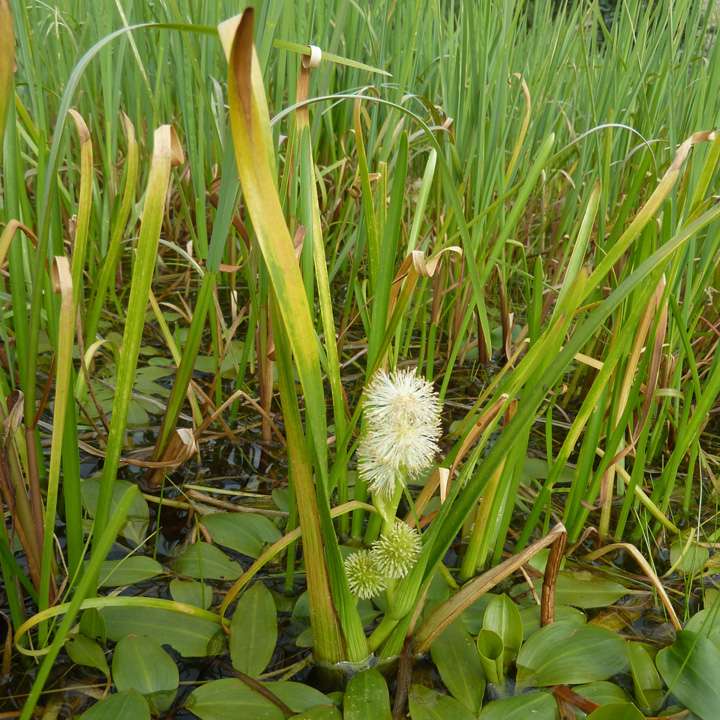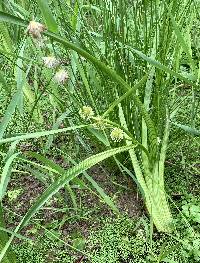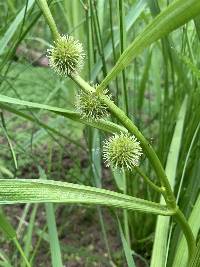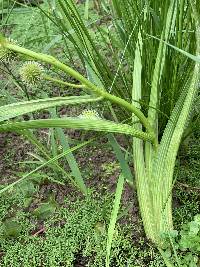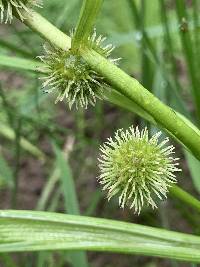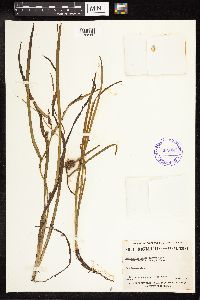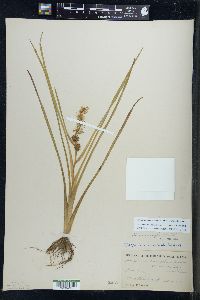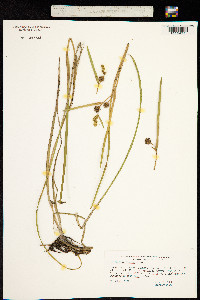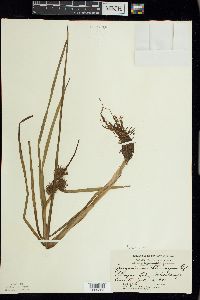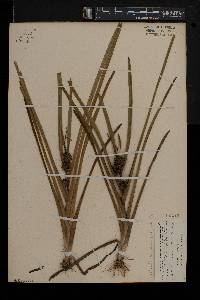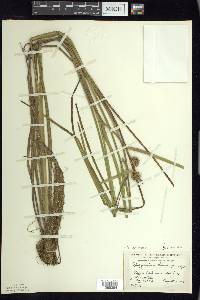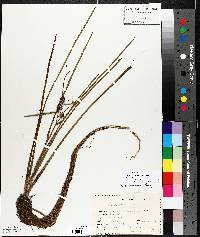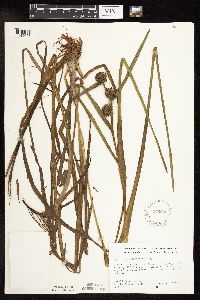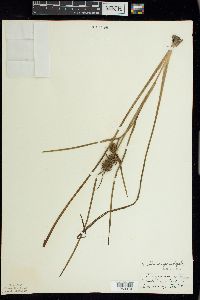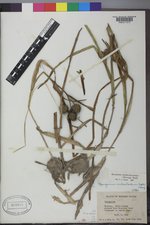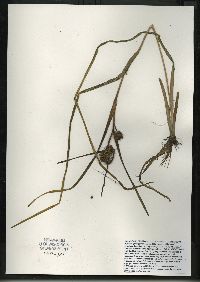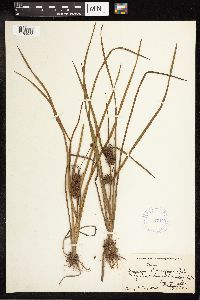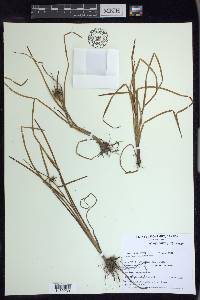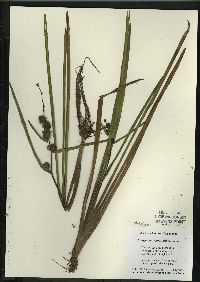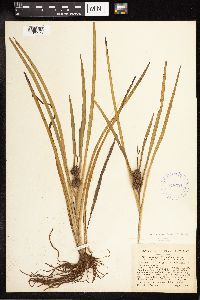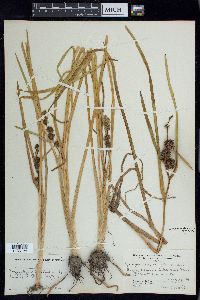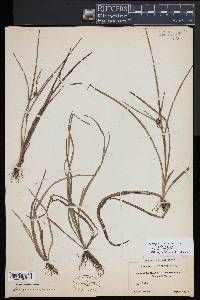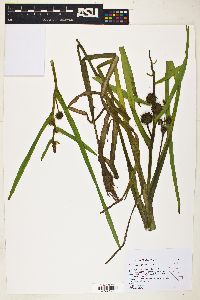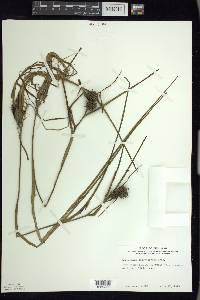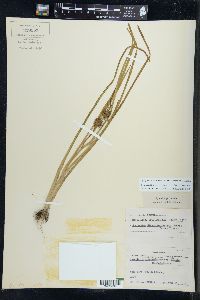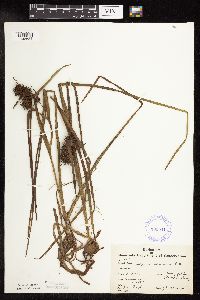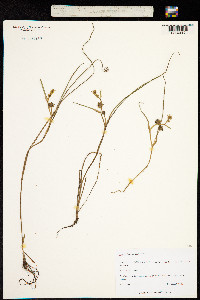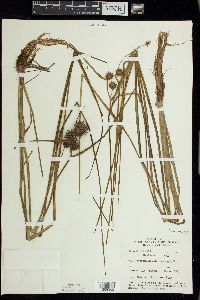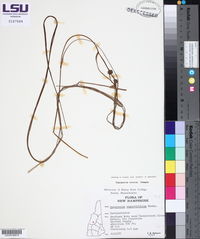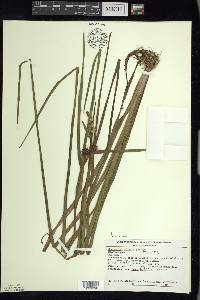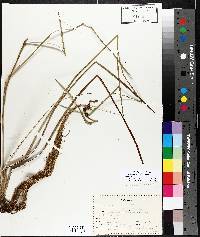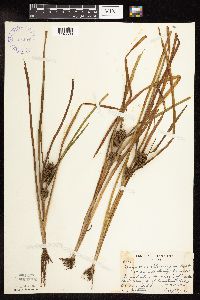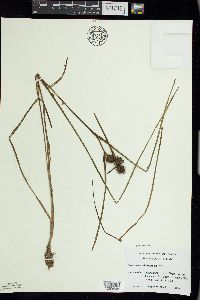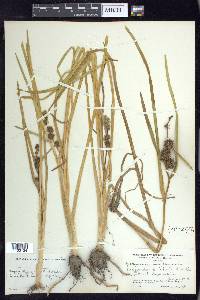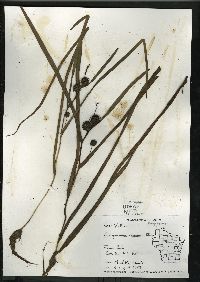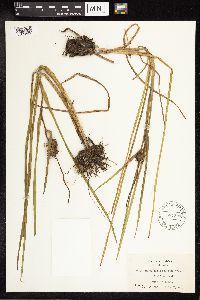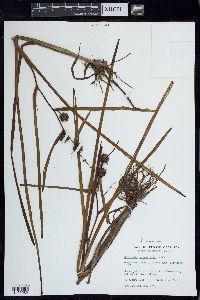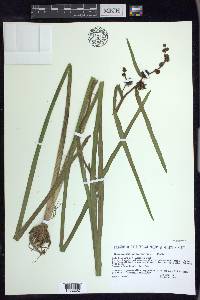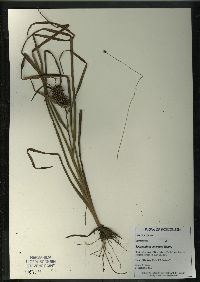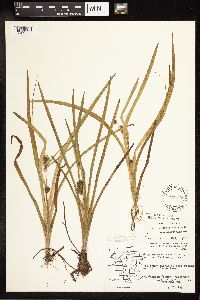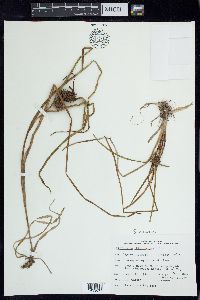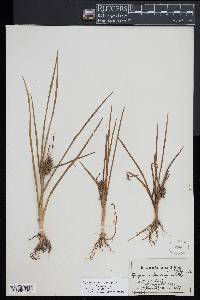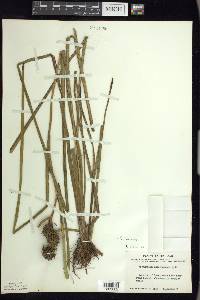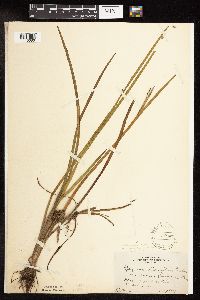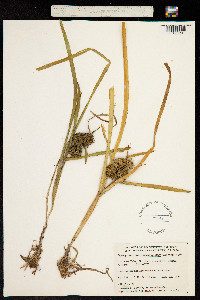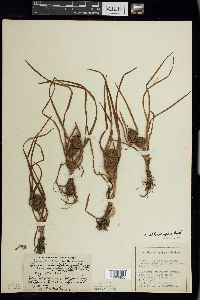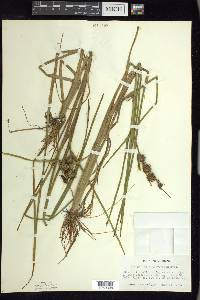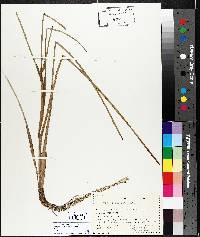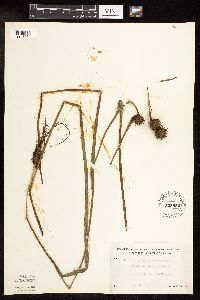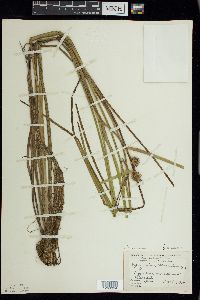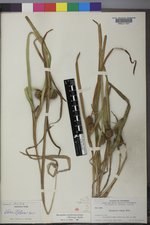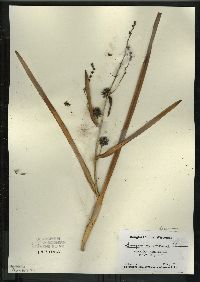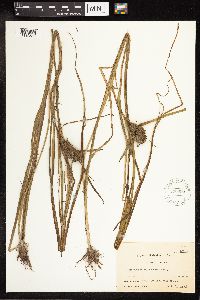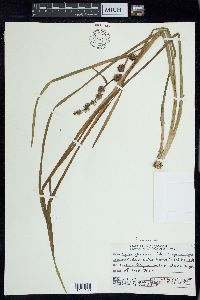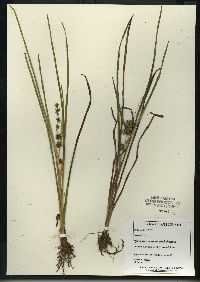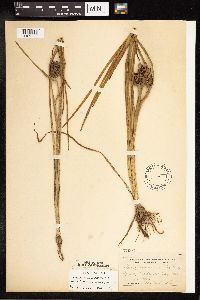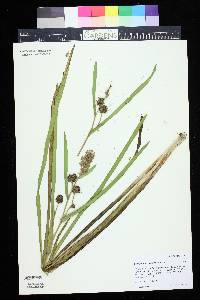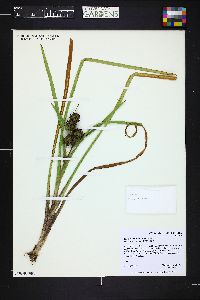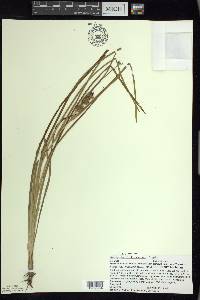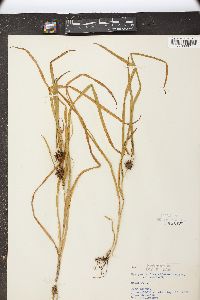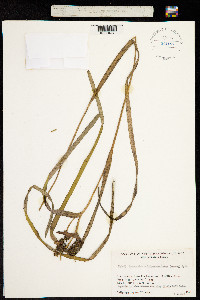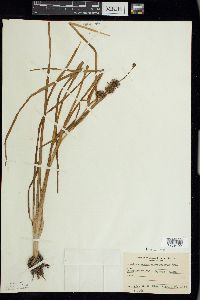Sparganium emersum
|
|
|
|
Family: Typhaceae
European Burr-Reed
[Sparganium angustifolium subsp. emersum (Rehmann) Brayshaw, moreSparganium chlorocarpum f. acaule (Beeby ex Macoun) E.G.Voss, Sparganium diversifolium var. acaule (Beeby ex Macoun) Fernald & Eames, Sparganium emersum subsp. acaule (Beeby ex Macoun) C.D.K.Cook & M.S.Nicholls, Sparganium emersum var. acaule (Beeby) A.Haines, Sparganium simplex var. fluitans , Sparganium simplex var. longissimum (Fr.) Graebn., Sparganium simplex var. multipedunculatum] |
Plants robust to slender, to 2 m; leaves and inflorescences emergent, stiff, or some or all leaves floating, limp. Leaves when erect rather stiff, partially to entirely keeled, flat, to 0.8 m 4--10 mm; floating leaves limp, keeled at least near base, to 2 m 4--18 mm. Inflorescences: rachis unbranched, erect; bracts ascending to erect, often somewhat inflated toward base; pistillate heads 1--6, contiguous or not, proximal axillary and peduncled, distal supra-axillary and sessile, 1.6--3.5 cm diam. in fruit; staminate heads 3--7(--10), contiguous or not with each other, sometimes some contiguous and some not, but not contiguous with distalmost pistillate head. Flowers: tepals without subapical dark spot, tip erose; stigmas 1, linear-lanceolate. Fruits green to reddish brown, lustrous, stipitate, fusiform, slightly constricted below equator, body not faceted, 3--4 1.5--2 mm excluding stipe, tapering to beak; beak straight to curved, 2--4.5 mm; tepals attached at base, reaching about to equator. Seeds 1. 2n = 30. Flowering late spring--early fall (May--Oct southward, Jun--Aug northward). Still to flowing eutrophic and mesotrophic, circumneutral to somewhat alkaline waters, sometimes abundant; 0--3000 m; St. Pierre and Miquelon; Alta., B.C., Man., N.B., Nfld. and Labr., N.W.T., N.S., Ont., P.E.I., Que., Sask., Yukon; Alaska, Ariz., Calif., Colo., Conn., Idaho, Ill., Ind., Iowa, Maine, Md., Mass., Mich., Minn., Mont., Nebr., Nev., N.H., N.J., N.Y., N.C., N.Dak., Ohio, Oreg., Pa., S.Dak., Utah, Vt., Va., Wash., W.Va., Wis., Wyo.; Eurasia. Less robust plants of Sparganium emersum are found from Manitoba, Minnesota, and Iowa, east to the Atlantic coast. They have erect leaves, 3--7 mm wide, much exceeding the short inflorescence; supra-axillary, sessile, and crowded pistillate heads; and 3--4 mm fruits with a 3--4 mm beak. Such plants have been called S. emersum subsp. acaule (C. D. K. Cook and M. S. Nicholls 1986), and they are widely known as S. chlorocarpum Rydberg var. acaule or S. chlorocarpum f.orma acaule. Inasmuch as they often grow with and are not always clearly distinct from typical plants, and in the absence of definitive, range-wide studies, they are recognized here only as a form (fide E. G. Voss 1966; G. E. Crow and C. B. Hellquist 1981). Sparganium emersum is easily confused with S. angustifolium, especially when floating leaves are present, but it is distinguished by its leaves which are triangulate at least at the base, by its often more numerous staminate heads, at least some of which are not contiguous, and by its greenish fruits with longer beaks (C. D. K. Cook and M. S. Nicholls 1986). In northern and northwestern states and British Columbia, it resembles S. angustifolium in the distribution of the staminate heads, the distal of which tend to be confluent. Some Cook and Nicholls noted that sSome characters of S. angustifolium might have been incorporated into S. emersum, and our plants could be a stable hybrid that differs somewhat from S. emersum as it is known in Europe (C. D. K. Cook and M. S. Nicholls 1986). G. E. Larson (1993) called for further study of the entire S. emersum-S. angustifolium complex, which is perhaps better treated as one variable species, S. angustifolium (T. C. Brayshaw 1985) Hybrids with Sparganium hyperboreum and S. natans have been reported from Europe but are doubted by C. D. K. Cook and M. S. Nicholls (1986). In eastern provinces and states, S. emersum could be confused with S. americanum and S. androcladum, but it can be distinguished from them by its supra-axillary pistillate heads and its tepals lacking a subapical dark spot.
Perennial aquatic herb to 2 m tall Leaves: emersed or floating. The emersed leaves are erect and stiff, to 0.8 m long, 4 - 10 mm wide, with a longitudinal fold stretching partially or entirely along the back. Floating leaves limp, to 2 m long, 4 - 18 mm wide, with a longitudinal fold at the base. Inflorescence: emersed, bracts ascending to erect and often inflated near base, main axis unbranched and erect. Three to seven male flower heads are sometimes tightly clustered but do not touch the uppermost female flower head. One to six female heads sometimes tightly clustered, with the stalked upper heads borne axillary and the stalkless lower heads borne above the axil (supra-axillary). Flowers: tiny, with one narrow lance-shaped stigma and tepals lacking a dark spot near the unevenly cut tip. Fruit: a single-seeded achene-like drupe borne in a head 1.6 - 3.5 cm across, shiny green to reddish brown, 3 - 4 mm long, 1.5 - 2 mm across, spindle-shaped, tapering to a straight to curved beak 2 - 4.5 mm long, slightly constricted below the middle, with persistent tepals extending to the middle. Similar species: Sparganium eurycarpum is easily distinguished by having two stigmas in most female flowers and inverse pyramidal fruit. Sparganium americanum and Sparganium androcladum have erect, emersed leaves and inflorescences, and the inflorescences are branched. Sparganium natans has limp and floating leaves, a 0.5 - 1.5 mm fruit beak, and usually has only one male flower head. Sparganium angustifolium has limp and floating leaves that lack a longitudinal fold, a 1.5 - 2 mm fruit beak, and male flower heads that are clustered together so closely that they resemble a single elongate head. Flowering: mid June to early September Habitat and ecology: Local in ditches, shallow water, and streams. Occurence in the Chicago region: native Etymology: Sparganium comes from the Greek word sparganion, a derivation of the word sparganon, meaning swaddling-band. This refers to the ribbon-like leaves of these plants. Emersum comes from the Latin word emersus, meaning emerging. Author: The Morton Arboretum Much like no. 5 [Sparganium angustifolium Michx.], but with broader (6-12 mm), flat, more coarsely veined lvs, the basal ones ±V-shaped in section below; bracts and upper lvs not dilated at base except by the scarious margins; pistillate heads 1.5-2(-2.5) cm thick when ripe; 2n=30. In quiet water; circumboreal at high latitudes, s. to N. Engl., N.Y., Man., Colo., and Calif. Our plants, and most others from the conterminous U.S. and s. Can., belong to var. multipedunculatum (Morong) Reveal. (S. multipedunculatum) The more boreal and Eurasian var. emersum is more emergent, with larger heads and more keeled basal lvs. (S. simplex) Gleason, Henry A. & Cronquist, Arthur J. 1991. Manual of vascular plants of northeastern United States and adjacent Canada. lxxv + 910 pp. ©The New York Botanical Garden. All rights reserved. Used by permission. From Flora of Indiana (1940) by Charles C. Deam All of the specimens, with one exception, and reports are restricted to the lake area where it is infrequent. It is found in habitats similar to those of the preceding species [Sparganium americanum]. [Deam calls gracile forms of this species var. acaule. He says] all of my specimens are from the lake area except one which was found in Hancock County in a springy place along a creek. It is infrequent but probably more common in the state than the species. The habitat is that of the other species of the genus. …… Indiana Coefficient of Conservatism: C = 8 Wetland Indicator Status: OBL |

